In this article, we will see how to deploy a PHP 8.0.2 application on Azure App Service and configure continuous integration with Azure DevOps. We will also add integration with SonarCloud to ensure that the code meets quality standards.
1. What is App Service
2. What is Azure DevOps
3. SonarCloud
4. Steps to create an App Service for PHP on Azure
5. Steps for deployment with Azure DevOps
6. Integration with SonarCloud
7. Bibliography
App Service y Azure DevOps

1.What is App Service
App Service is a managed service for deploying and scaling .NET, .NET Core, Node.js, Java, Python, or PHP applications in containers or running on Windows or Linux.

2. What is Azure DevOps
Azure DevOps is a project management platform. It provides an integrated set of services and tools to manage software projects, from planning and development through testing and deployment. It helps developers implement continuous integration.

3. SonarCloud
SonarCloud is a cloud-based static code analysis service that helps developers improve the quality and security of their code. It offers automatic code analysis in 25 different programming languages, including Java, Python, JavaScript, C/C++, and PHP.
4. Steps to create an App Service for PHP in Azure
I. Create a New Resource
The first step is to access the Azure marketplace, search for “App Service,” and select “Web App” from the available options.
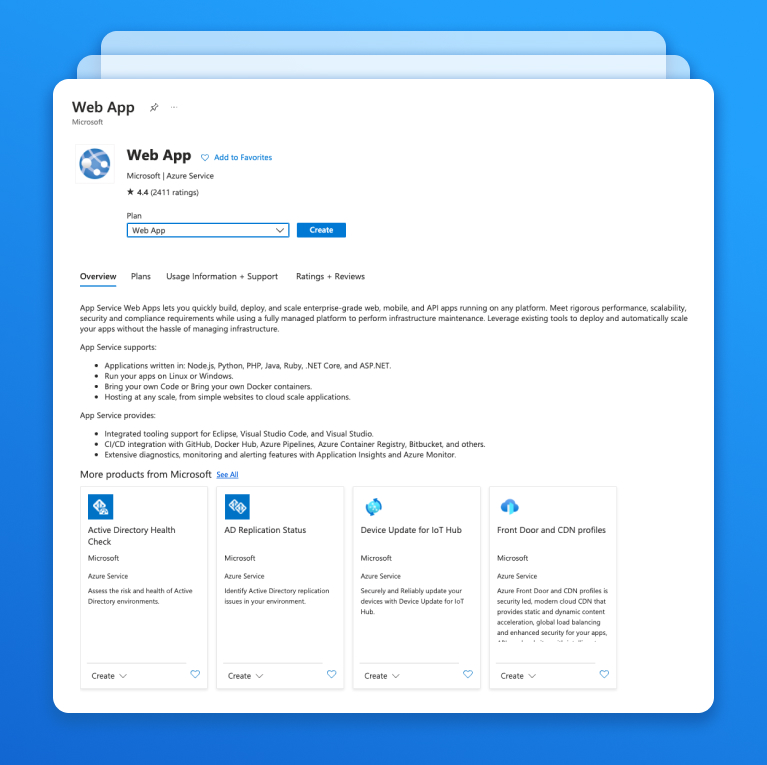
II. Basic Configuration
Complete the basic information for our AppService: subscription, resource group, runtime, region, plan…
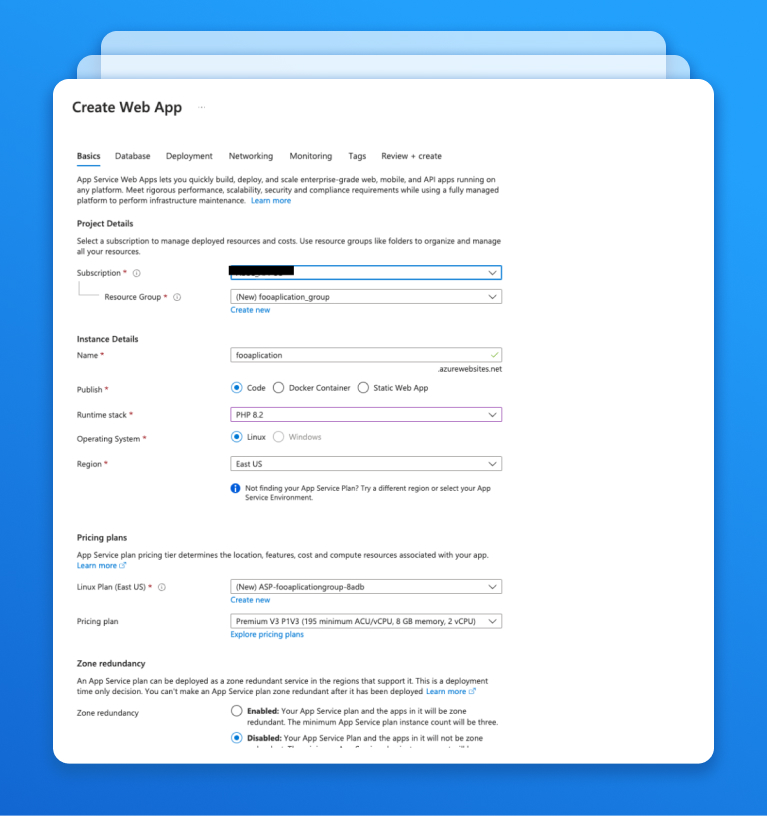
III. Database Creation (Optional)
If needed, you can also create the database during the AppService creation process.
IV. Creation and Deployment of the AppService
Once the AppService is created and deployed in Azure, we will have our working environment ready to deploy our code.
5. Steps for deployment with Azure DevOps:
I. Create a New Project
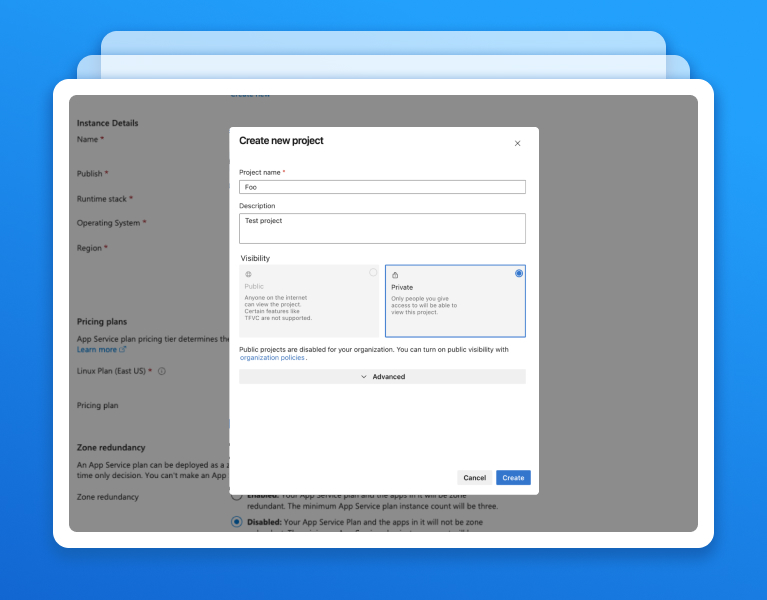
II. Clone the Repository
Once the project and initial repository are created, the next step is to clone it to a local environment.
III. Create a Build Pipeline
A pipeline is an automated process that compiles the web application’s source code and generates a package. In the creation wizard, we will first select the source of our repository. In our case, Azure Repos Git:
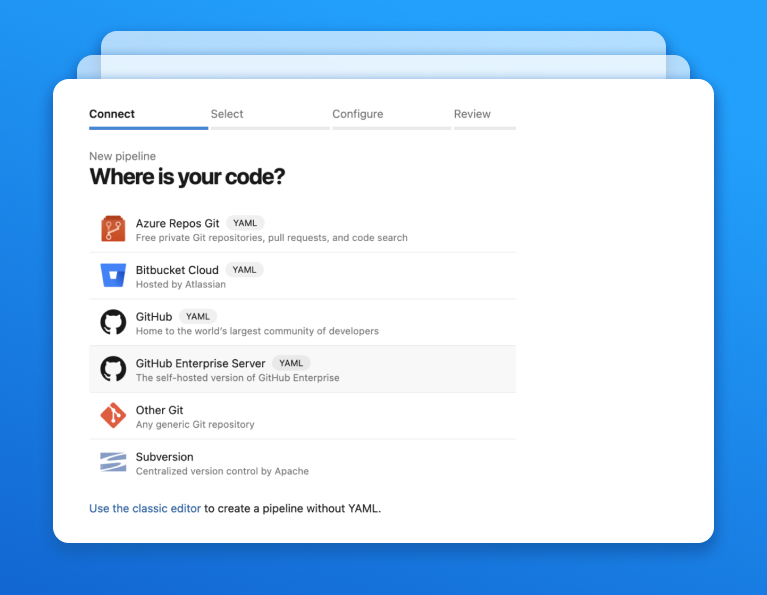
IV. Pipeline Configuration
The corresponding language in this case is “PHP as Linux Web App on Azure:
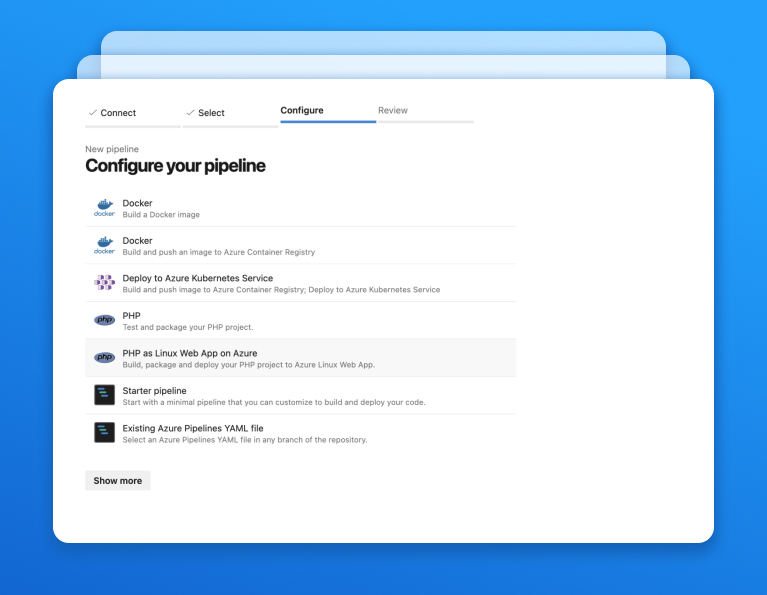
V. Subscription Selection
Next, we select the subscription where we want to deploy and the Web App.
VI. YAML Customization
A YAML file with the pipeline configuration will be generated, which we can customize according to our needs.
Example of YAML where PHP 8.2.0 and the necessary modules are installed on the instance raised by Azure DevOps, the build is performed, certificates are downloaded, and the upload to the App Service is done:
# Build, package and deploy your PHP project to Azure Linux Web App.
# Add steps that run tests and more:
# https://docs.microsoft.com/azure/devops/pipelines/languages/php trigger:
– develop variables:
# Azure Resource Manager connection created during pipeline creation
azureSubscription: ‘subscription-id’
# Web app name
webAppName: ‘webAppName’# Agent VM image name
vmImageName: ‘ubuntu-22.04’# Environment name
environmentName: ‘environmentName’# Root folder under which your composer.json file is available.
rootFolder: $(System.DefaultWorkingDirectory)
stages:
– stage: Build
displayName: Build stage
variables:
phpVersion: ‘8.2.0’
jobs:
– job: BuildJob
pool:
vmImage: $(vmImageName)
steps:
– script:
sudo add-apt-repository ppa:ondrej/php
sudo apt update
sudo apt install php8.2 -y
sudo apt install php8.2-cli php8.2-common php8.2-imap php8.2-redis php8.2-xml php8.2-zip php8.2-mbstring
sudo update-alternatives –set php /usr/bin/php$(phpVersion)
sudo update-alternatives –set phar /usr/bin/phar$(phpVersion)
sudo update-alternatives –set phpdbg /usr/bin/phpdbg$(phpVersion)
sudo update-alternatives –set php-cgi /usr/bin/php-cgi$(phpVersion)
sudo update-alternatives –set phar.phar /usr/bin/phar.phar$(phpVersion)
php -version
workingDirectory: $(rootFolder)
displayName: ‘Use PHP version $(phpVersion)’
– script: composer install –no-interaction –prefer-dist
workingDirectory: $(rootFolder)
displayName: ‘Composer install’
– task: DownloadSecureFile@1
name: jwtCertificatePrivate
displayName: ‘Download JWT private certificate’
inputs:
secureFile: ‘private.pem’
– task: DownloadSecureFile@1
name: jwtCertificatePublic
displayName: ‘Download JWT public certificate’
inputs:
secureFile: ‘public.pem’
– task: CopyFiles@2
inputs:
sourceFolder: “$(Agent.TempDirectory)”
contents: |
public.pem
private.pem
targetFolder: $(rootFolder)/config/jwt/
displayName: “Import JWT certificate”
– task: ArchiveFiles@2
displayName: ‘Archive files’
inputs:
rootFolderOrFile: ‘$(rootFolder)’
includeRootFolder: false
archiveType: zip
archiveFile: $(Build.ArtifactStagingDirectory)/$(Build.BuildId).zip
replaceExistingArchive: true
– upload: $(Build.ArtifactStagingDirectory)/$(Build.BuildId).zip
displayName: ‘Upload package’
artifact: drop
– stage: Deploy
displayName: ‘Deploy Web App’
dependsOn: Build
condition: succeeded()
jobs:
– deployment: DeploymentJob
pool:
vmImage: $(vmImageName)
environment: $(environmentName)
strategy:
runOnce:
deploy:
steps:
– task: AzureWebApp@1
displayName: ‘Deploy Azure Web App : webAppName’
inputs:
azureSubscription: $(azureSubscription)
appName: $(webAppName)
package: $(Pipeline.Workspace)/drop/$(Build.BuildId).zip
VII. Pipeline Execution
Run the pipeline and check that it has been deployed correctly in our AppService.
Integration with SonarCloud
To perform the analysis with SonarCloud, we first need to configure the integration of SonarCloud in Azure DevOps. To do this, we will create a new task in the build phase of the Azure DevOps pipeline. The task should have the following configuration:
- Task Name: “Run SonarCloud Analysis”.
- Task Type: “SonarCloud”.
- SonarCloud Analysis Token: This token can be generated in SonarCloud under the “Tokens” section.
- SonarCloud Configuration: In this section, you must specify the connection parameters to SonarCloud, such as the server, project key, and access token.
Example configuration in YAML:
– task: SonarCloudPrepare@1inputs:
SonarCloud: ‘GT PS’
organization: ‘organization’
scannerMode: ‘CLI’
configMode: ‘manual’
cliProjectKey: ‘project-key’
cliProjectName: ‘project-Name’
cliSources: ‘.’
– task: SonarCloudAnalyze@1
– task: SonarCloudPublish@1
inputs:
pollingTimeoutSec: ‘300’
Once the task is configured, it will add the configuration to our corresponding pipeline YAML.
We run our pipeline, which will call the SonarCloud service and generate a report with the results of the code quality analysis.
In summary, with Azure DevOps and SonarCloud, we can deploy PHP applications easily and with the assurance of code quality standards.
Bibliography
https://learn.microsoft.com/es-es/azure/devops/user-guide/services?view=azure-devops
https://en.wikipedia.org/wiki/Microsoft_Azure
https://es.wikipedia.org/wiki/PHP
https://docs.sonarsource.com/sonarcloud/getting-started/azure-devops/
